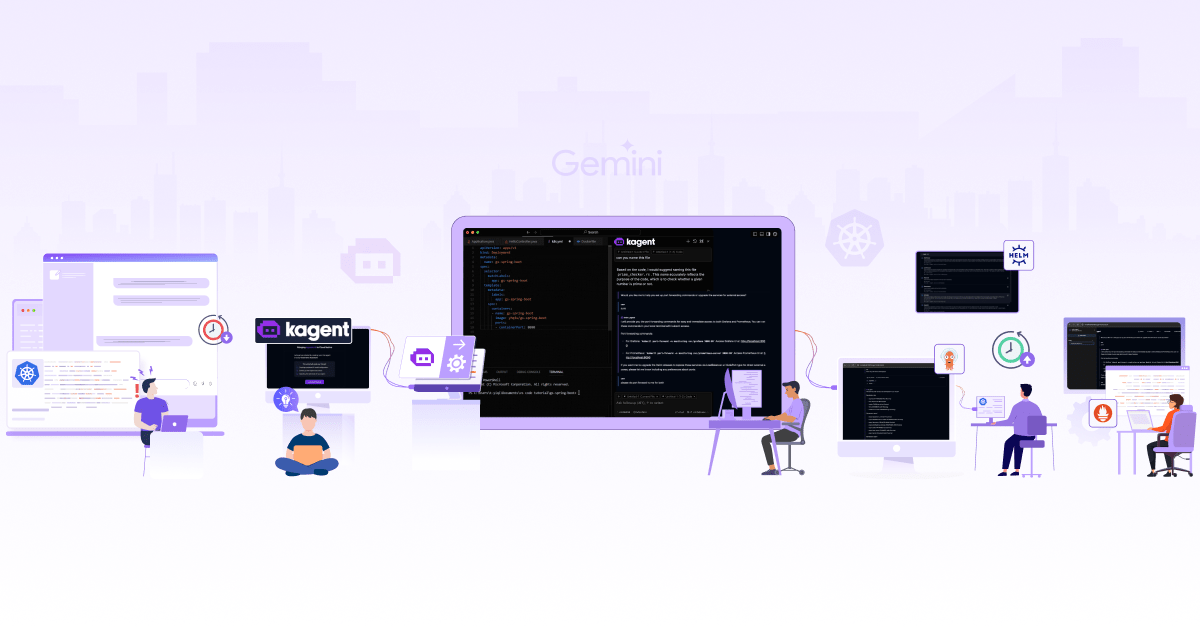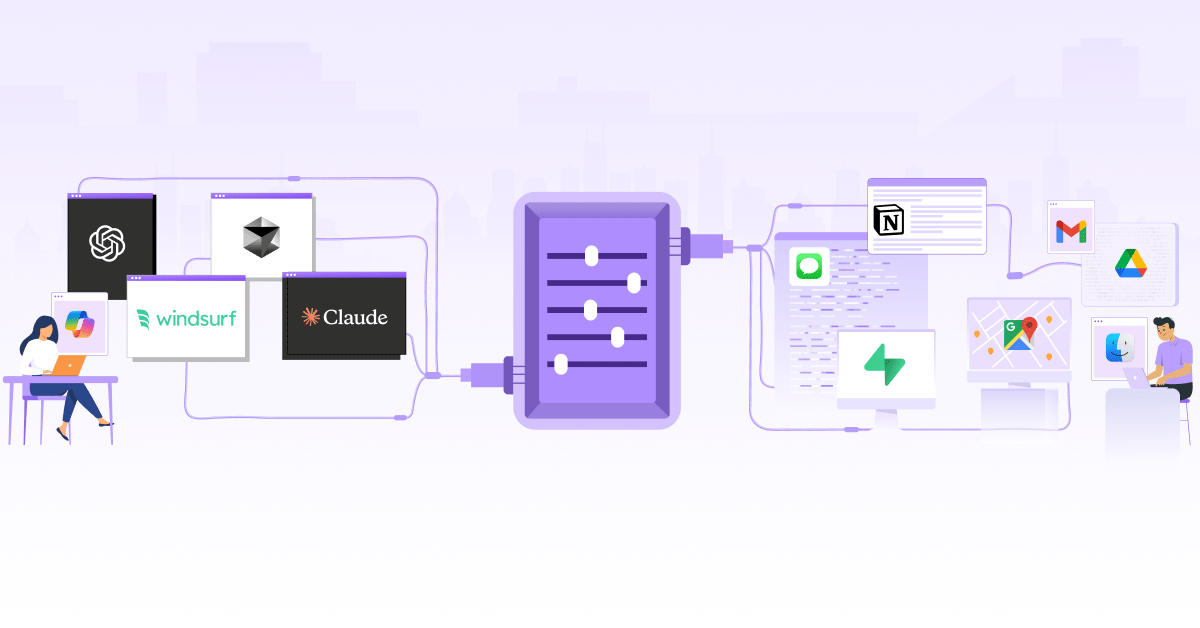
Cost Optimization Strategies for AI Workloads

Cost is one of the most persistent concerns in scaling AI-driven applications. From compute and storage to networking and model inference, multiple components contribute to the total cost of ownership. In this article, we’ll explore practical and actionable cost optimization strategies that can help streamline the development and improvement of AI-powered solutions. First, let’s see what drives the AI cloud cost.
Understanding AI cloud workload cost drivers
Running AI workloads in the cloud involves a complex ecosystem with multiple components, each contributing to the overall cost in different ways. Understanding these cost drivers is key to building efficient, scalable AI solutions. Below is a breakdown of the major areas where costs typically accumulate, helping you identify where the money goes and how to manage it effectively.
Compute resources
AI workloads are extremely compute-intensive, and the majority of AI project budgets often go towards compute resources. For example, OpenAI reportedly spent over $80 million to $100 million training GPT-4, with some estimates going as high as $540 million when including infrastructure costs. The more powerful the hardware, the more you pay, especially during long training sessions.
-
GPUs (Graphics Processing Units): GPUs are the primary hardware for AI training due to their ability to perform massive parallel computations, which are essential for deep learning. High-end GPUs like NVIDIA A100 and H100 drastically reduce training time compared to lower-tier GPUs, offering up to 10x speed improvements. However, they come at a premium - on-demand cloud rental for an A100 GPU can cost around $3 per hour, which is roughly 3–5 times more expensive than older or lower-end GPUs such as the T4.
- TPUs (Tensor Processing Units): Google’s TPUs are custom-designed AI accelerators optimized for TensorFlow and JAX workloads. Pricing for TPUs varies by version and region. For example, a TPU v4 Pod costs about $3.22 per chip-hour in the us-central2 region, while newer v5p TPUs are priced at $4.20 per chip-hour in select regions. TPU is only available within the Google Cloud ecosystem.
- Specialized AI Hardware: Various cloud providers offer purpose-built chips for inference, customizable ML acceleration, etc. These are optimized for cost-effective deployment of trained models, often delivering lower latency and better price-performance than general-purpose GPUs for inference tasks.
Storage costs
There are different types of storage requirements when it comes to building and running AI, and they hold the potential to add to the estimations.
- Training data: AI Models need massive amounts of training data. Images, audio, text, and videos reach the petabyte scale. Storing raw, preprocessed, and augmented data quickly becomes expensive, especially when running multi-version datasets for different experiments. Solutions like Amazon S3, Google Cloud Storage, and Azure Blob Storage are commonly used, but costs can spike with frequent access and large volumes.
- Model Artifacts: Every model generates files: weights, checkpoints, logs, config files, metrics, etc. As the models refine and mature, artifacts keep piling up, take up space, and cost money over time.
- Inference Data: Real-time or batch inference generates input/output records that may need to be logged for compliance, auditing, or future training. Retaining this data in hot or nearline storage can add up fast, especially in production environments with high traffic.
Cloud storage may seem cheap, but costs rise when you factor in retrieval frequency, storage class (hot vs cold), and data lifecycle.
Network costs
Network costs can be a significant factor in the total cost of running AI workloads in the cloud, especially as models and datasets grow larger and more distributed.
- Data Transfer: AI workloads often involve moving massive datasets for training, shuffling data between distributed compute nodes, and transferring model checkpoints or inference results. While uploading data (ingress) to the cloud is generally free across major providers, downloading data (egress) can become expensive, especially when transferring data across regions or out to on-premises environments. For example, AWS and Google Cloud typically charge $0.08–$0.12 per GB for data egress between regions or to the public internet, and even intra-region service-to-service transfers can add up to $0.01 per GB.
- API Calls: In high-frequency AI applications—such as real-time inference, streaming analytics, or distributed training—millions of API calls and inter-service communications can accumulate substantial costs over time. Each inference request, webhook, or internal service call may incur a small fee, which becomes significant at scale.
- Cross-Zone/Region Traffic: AI architectures that span across multiple availability zones or regions—often for redundancy, distributed training, or global inference—incur additional network charges for internal traffic. For instance, transferring data between AWS Availability Zones costs $0.01 per GB, and cross-region transfers are even higher. These costs are particularly relevant for AI workloads that require frequent synchronization of large datasets, model weights, or gradients across distributed nodes.
- High-Performance Networking: Beyond cloud bandwidth fees, the speed of data exchange is a critical performance and cost factor in distributed AI workloads. Specialized networking technologies like NVIDIA InfiniBand or custom high-speed interconnects (e.g, AWS Elastic Fabric Adapter, Google’s Andromeda) help reduce latency and improve bandwidth between nodes, enabling faster distributed training and inference. Without these, training large models can slow to a crawl due to communication bottlenecks, forcing operators to overprovision hardware just to maintain throughput.
Managed AI Services Pricing Models
Managed AI platforms like Google Vertex AI, AWS SageMaker, Azure Machine Learning, and Databricks, all of which handle deployment, scaling, and monitoring, promise speed and simplicity, by abstracting away infrastructure complexity, but this convenience can introduce structural cost challenges that are inherent to the software itself, not just user behavior.
- Pay-as-you-go pricing: Most platforms charge by the second or minute across all used resources—compute, storage, endpoints, and more. While this model offers flexibility, it also means costs scale continuously with usage. Even efficient workloads can result in unpredictable bills as applications grow.
- Auto-scaling Costs: Auto-scaling features are driven by the platform’s automation logic. During load spikes, these algorithms can aggressively provision resources, causing costs to surge. Such behavior is inherent to the platform’s scaling mechanisms and can lead to significant cost increases, even if autoscalers are configured according to best practices.
- Hosted Notebooks & Pipelines: Managed platforms often keep notebooks and pipelines running in the background for user convenience. This design choice means resources continue to accrue charges even when idle, prioritizing user experience over strict cost control.
Hidden Costs
AI workload doesn’t just cost money when it’s running; it costs before and after, too.
- Experimentation: Model development is iterative. Tweaking hyperparameters, trying new architectures, and running multiple jobs to compare performance takes time, compute, and storage, and this is done across teams, which can add costs exponentially.
- Model Drift Monitoring: Once the model is live, it needs ongoing monitoring and tracking input distributions, accuracy over time, etc., requiring background jobs and extra tooling, all of which cost money.
- Retraining: Data models evolve and sometimes require retraining in a weekly, monthly, or after set periods of time, adding expenses of training jobs to the original development cost. In use cases where core model behavior is stable but context shifts frequently, strategies like Retrieval-Augmented Generation (RAG) can be more efficient. RAG injects up-to-date information at inference time without redoing the entire training cycle, reducing both compute and latency. Choosing the right strategy based on how the data changes directly impacts long-term cost and efficiency
Infrastructure-Level Optimization
Optimizing infrastructure is one of the fastest and impactful ways to bring down cloud AI costs. It starts with choosing the right compute resources.
GPU/TPU selection and optimization strategies
Not every model requires advanced hardware like A100s or H100s. Running small to medium-sized workloads on such high-end GPUs is often overkill and leads to unnecessary cost inflation.
Instead, aligning hardware with workload needs results in better efficiency. For example, light training or inference tasks can run effectively on NVIDIA T4 or A10G GPUs, which are known for their strong cost-performance balance. While these GPUs are well-suited for many tasks, for TensorFlow workloads on Google Cloud, TPUs (v2, v3, or v4) may offer even greater efficiency for large-scale model training. However, migrating between hardware types, such as moving from GPU to TPU, can involve additional costs, including storage, data transfer, and potential idle time during setup.
Spot instances and preemptible VMs for training workloads
Beyond hardware selection, spot instances or preemptible VMs are a goldmine for training workloads. They’re 60–90% lower than standard on-demand pricing, and work perfectly for jobs that can handle interruptions. These instances are spare compute capacity offered at a discount, with the trade-off that they can be reclaimed by the cloud provider with little notice. They are worth the trade-off with robust checkpointing and orchestration tools that enable seamless recovery, minimize disruption, and maximize savings. This trade-off makes them well-suited for non-production jobs.
Auto-scaling configurations for variable workloads
Auto-scaling is essential for managing cloud infrastructure costs and efficiency for workloads that fluctuate in demand. It dynamically adjusts compute resources such as virtual machines, containers, or database instances so you only pay for what you actually use, rather than maintaining excess capacity during low-traffic periods. But poorly tuned auto-scalers can lead to aggressive scaling and then leave resources idle. Proper configurations, such as sensible min/max replica limits and cooldown times, help maintain that delicate balance between responsiveness and cost.
Storage Tiering for training data and model artifacts
Storage optimization is a critical aspect of AI workflows/ Datasets, model checkpoints, logs, and inference outputs, which pile up quickly. Keeping everything in high-speed storage is expensive. A tiered storage strategy helps mitigate this. Active datasets can live in high-access tiers, while older model versions and logs should be pushed to cold or archive storage. Most cloud providers support automated lifecycle transitions, making implementation straightforward.
Optimizing infrastructure involves aligning compute, storage, and scaling strategies with observed workload patterns. While it may not always be possible to predict workload behavior perfectly at the planning stage, monitoring and adapting infrastructure choices over time helps ensure that systems remain both efficient and cost-effective.
Model-Level Optimization
Once infrastructure is in check, the next layer of savings comes from optimizing the models themselves. Model optimization reduces computational overhead, lowers costs, and improves efficiency, without compromising on reliability or output quality. Techniques like pruning, quantization, and distillation help achieve a smaller footprint while maintaining performance.
Model compression techniques
Model compression techniques optimize neural networks at the architectural level, enabling efficient deployment while maintaining performance. Three core strategies streamline models:
- Pruning removes redundant weights, trimming model size and compute needs with minimal accuracy loss.
- Quantization converts parameters to lower-precision formats (e.g., INT8), slashing memory use and accelerating inference.
- Knowledge distillation trains compact models to mimic larger ones, achieving comparable results at a fraction of the cost.
These methods directly reduce computational demands and memory footprints, making models viable for edge devices and cost-sensitive environments. Here’s a detailed blog post we have on model quantization techniques.
Efficient model architectures
Selecting the right model architecture from the outset is a foundational decision in building cost-effective AI systems. In many cases, lightweight models like MobileNet, EfficientNet, or TinyBERT can offer a near-identical level of accuracy for a fraction of the cost. These architectures are designed for efficiency and make it possible to run inference on cheaper hardware, or even directly on edge devices.
Batching strategies for inference
When serving predictions at scale, batching plays a critical role in optimizing compute efficiency and controlling costs. Instead of processing each prediction individually, multiple requests can be grouped into a single forward pass through the model. This dramatically increases throughput, especially on GPUs or TPUs. But finding the right balance is necessary, as too big a batch can introduce latency, especially in real-time systems. Check out our blog post on batch scheduling on Kubernetes for more information about how Kubernetes supports batch scheduling.
Caching frequently requested predictions
Caching can be a powerful optimization strategy in AI systems, particularly in use cases like recommendations, search, or autocomplete, where the same or similar inputs appear frequently. However, the system must first identify recurring patterns, determine what’s worth caching, and implement mechanisms to manage cache invalidation effectively. Techniques like input hashing can help store and retrieve results efficiently, but they require ongoing tuning and monitoring. Even large-scale AI providers like OpenAI often forgo caching common responses—such as ‘thank you’—due to the complexity and trade-offs involved, including model freshness, personalization, and cache management overhead.
Transfer learning to reduce training costs.
Transfer learning is a strategic approach to reducing training costs by leveraging existing models. Rather than building models from scratch—a process that demands extensive data, time, and computational resources—teams can fine-tune pre-trained models on domain-specific datasets. This method not only accelerates development but also conserves resources, making it particularly advantageous for startups and smaller teams operating with limited budgets.
A notable example is DeepSeek’s development of the R1 model. By employing techniques like model distillation and hybrid fine-tuning, DeepSeek adapted large-scale models to specific tasks efficiently. This approach enabled them to achieve performance comparable to leading AI models at a fraction of the typical training cost.
Operational Optimization
Behind every high-performing AI system is a well-optimized set of operational practices. Without proper oversight and controls, even the most efficient models and infrastructure can result in unexpected and escalating costs. Operational optimization ensures that workflows are not only performant but also sustainable over time.
CI/CD pipeline efficiency for ML workflows
Operational efficiency in AI starts with a robust CI/CD pipeline. A well-structured ML pipeline automates everything from training and testing to deployment. But retraining the entire model every time there’s a small code change or running unnecessary jobs can consume a lot of compute. Modern ML pipelines address this with smart optimizations. They incorporate caching, track code, and data changes at a granular level, and trigger retraining only when meaningful updates occur. This “intelligence” typically comes from orchestrators and tools like MLflow, Kubeflow Pipelines, or GitHub Actions, when they are set up with the right heuristics, versioning strategies, and dependency tracking. Tools like MLflow, Kubeflow, or GitHub Actions help automate the process while keeping it lean. Check out our blog post on Running ML Pipelines on Kubeflow on GKE for more information.
Automated monitoring and resource utilization alerts
Monitoring is equally critical in managing AI workloads on the cloud. AI jobs and resources like notebooks, model training instances, and inference endpoints can spin up quickly but don’t always shut down automatically when idle. This happens because many AI workloads involve long-running processes, iterative experimentation, or misconfigured auto-scaling rules that keep resources active beyond their useful time. Additionally, complex dependencies between components in AI pipelines often require cautious shutdowns to avoid disrupting workflows. Whether using CloudWatch, Azure Monitor, or GCP Monitoring, proactive alerting is a safety net for the budget.
Cost allocation and tagging strategies
Cost allocation and tagging are essential practices for managing and optimizing AI cloud expenses as teams scale. Consistently applying tags across projects, teams, environments, and workloads enables precise cost tracking and granular visibility. This clarity helps identify which experiments deliver value, which services incur unnecessary expenses, and which teams may be exceeding their budget allocations. Without a disciplined tagging strategy, cost reports lack accuracy, making it difficult to pinpoint optimization opportunities or enforce accountability.
Budget controls and spending cap
Implementing budget controls and spending caps is a critical cost optimization strategy for managing AI workloads in the cloud. By setting usage limits and automated alerts at the project, team, or service level, organizations gain better visibility and control over their AI spending. These controls help prevent unexpected cost overruns from resource-heavy tasks like model training or inference scaling.
FinOps practices for AI teams
And then there’s FinOps: the discipline of bringing financial accountability to engineering teams. It’s about fostering a culture where developers understand the cost implications of their decisions. Regular reviews of usage data, forecasting future spend, and aligning budget with business outcomes turn into a finance task.
Operational optimization is the art of running lean without slowing down, which is also known as FinOps. FinOps is all about making every process intentional, accountable, and aligned with business goals.
Best Practices and Recommendations
Effective management of AI workloads in the cloud requires a strategic approach encompassing workload classification, governance, continuous monitoring, and cost control.
- Classifying workloads as experimental, training, or inference enables tailored budget allocation, scaling, and resource selection based on their stability and criticality.
- Implementing cost governance policies, such as defining GPU usage criteria, job duration limits, and approval processes for significant expenditures, promotes proactive budgeting.
- Continuous cost monitoring through dashboards, automated alerts, and regular audits helps identify underutilized resources and control spending.
- Regular right-sizing of compute resources ensures efficiency without compromising performance.
- Conducting build-versus-buy analyses can guide decisions between using external APIs or developing custom models, optimizing both cost and development effort.
- Finally, evaluating the total cost of ownership, including pricing, data transfer fees, and integration complexity, supports informed choices between cloud providers and service options, with reserved capacity or committed-use discounts offering savings for predictable workloads.
It is always recommended to carefully research and align solutions with your specific requirements to achieve the best cost and performance balance.
Conclusion
AI cloud offers unmatched scalability and performance, but comes with a complex and often unpredictable cost structure. From compute and storage to networking, managed services, and hidden operational overhead, every layer of the stack can impact the bottom line. Designing efficient infrastructure, optimizing models, streamlining operations, and leveraging cloud-native strategies are key to keeping costs under control. With the right tools and practices, alongside continuous monitoring and planning, AI workloads can be both powerful and financially sustainable. Treat cost as a design constraint, not an afterthought.
In this blog post, we covered various ways to reduce and optimize the AI cloud cost. However, making changes in development can be complicated. Bringing in the FinOps or AI Cloud experts can save you lots of trouble. The InfraCloud team can help you make the maximum ROI on every dollar you invest.
I hope this article helps you manage cloud costs better. If you like to discuss, add something to the article, or share your case, please send me a message on LinkedIn.
Stay updated with latest in AI and Cloud Native tech
We hate 😖 spam as much as you do! You're in a safe company.
Only delivering solid AI & cloud native content.











